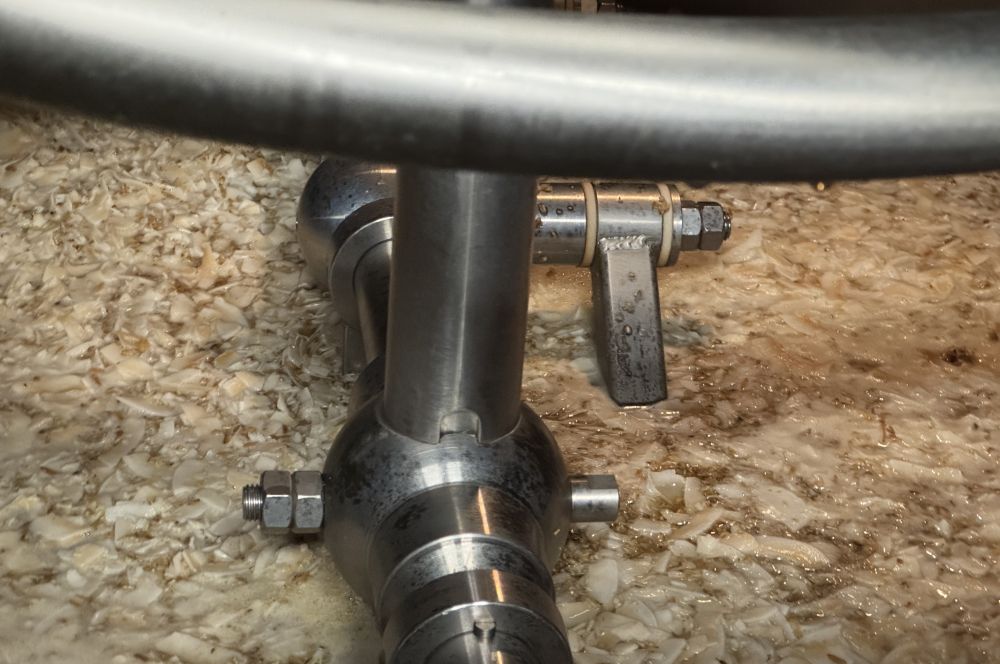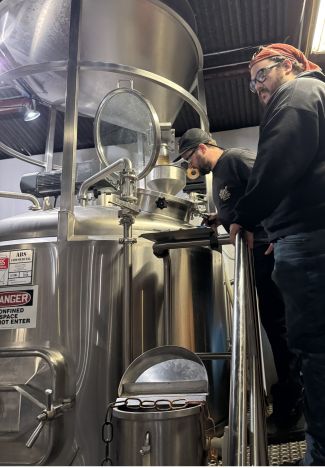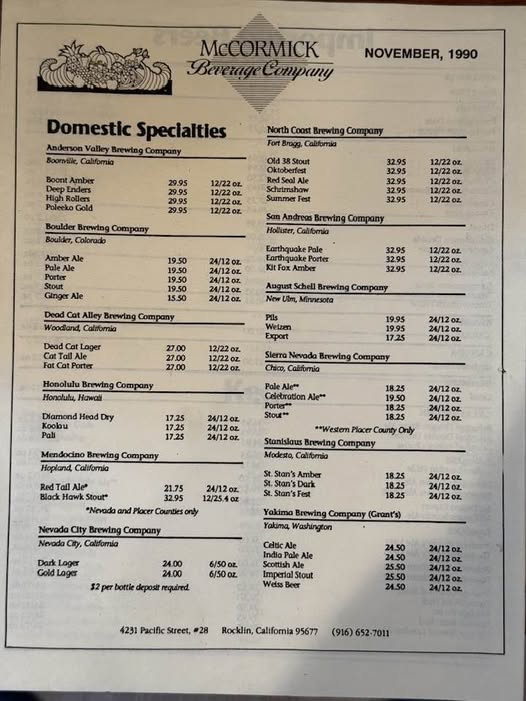
 There will be 140 beer stories April 19 at Colorado’s Collaboration Fest. This is one of them. (In fact, a few others will follow, but sometimes a Naked City reference is hard to resist.)
There will be 140 beer stories April 19 at Colorado’s Collaboration Fest. This is one of them. (In fact, a few others will follow, but sometimes a Naked City reference is hard to resist.)
Sweet, milky, tropical aromas of coconut came in waves last Friday (March 28) in the Our Mutual Friend brewhouse. There was a spike when OMF head brewer Jan Chodkowski added coconut flakes to the mash, and another when the vorlauf began, recirculating the wort. Of course, Chodkowski said, not much of that aroma would survive fermentation.
(That’s Chodkowski, in back, and Cheluna brewmaster Tomas Barrios on the OMF brewdeck at the right.)
Nonetheless, expect the collaboration between OMF and Cheluna Brewing poured at CollabFest to smell and taste tropical after more coconut flavoring is added post fermentation. Hops from Washington’s Yakima Valley (Azacca), New Zealand’s Nelson region (Nectaron), and Australia (Vic Secret) will provide passionfruit, pineapple and mango character.
Chodkowski’s three-year-old son gave the beer its name, Monkey Steps. At its heart, the beer is a hazy IPA, the haze coming from wheat, flaked oats, hops, and (of course) coconut. This is the second coconut collaboration between Cheluna and OMF. Last year, the breweries collaborated on another coconut beer, Cabo Lime Coconut Sour, but that was not for CollabFest.
More than 180 breweries collaborated to brew 140 beers for the festival, which is at the Westin Westminster (full details here, including ticket information). This was my “best beer festival” in 2024. Some of the collaborations were what you would expect — such as a West Coast IPA from hop specialists Comrade Brewing and New Mexico’s LaCumbre, one of 31 out-of-state breweries involved — and others a bit different.
There is, after all, a category labeled “weird.” For instance, Wild Provisions and Great Divide combined to make a whiskey barrel aged tmavé (Czech dark lager) called TmavYeti. It is a blend Yeti Imperial Stout and a Wild Provisions Tmavé and will be served as a milk pour (think “dark chocolate, coffee, foam”). And then there is Smooth Crimini-Ale from Old 121 and Lady Justice. It is a Mushroom West Coast IPA made with Amarillo and Columbus hops as well as Crimini and Porcini Mushrooms.
Many might call Cheluna’s collaboration with Oaxaca Brewing, a brewpub in Oaxaca, Mexico, weird. Red Tepache Sour is a beer version of tepache, a fermented pineapple drink that originated in pre-Columbian Mexico. Drinkers who visited Dos Luces on Broadway before it closed will remember the Pineapple Ginger Tepache, which was made with blue corn.
Cheluna founder Javier Perez calls the Cheluna-Oaxaca iteration the “idea of tepache,” with tartness playing against spices. “(Tepache) is just a really old, super old, wild fermentation drink,” he said. “And it’s essentially when you buy a pineapple and you chop off the rind, you throw the rind in a clay pot, maybe a few chunks of pineapple with it, but mostly it’s the rind, pack it down in there, throw in some cinnamon and cloves, and just let it sit. And it ferments just with the yeast on the rind.”
Cheluna and Oaxaca used packaged yeast, but still a pretty good story, right? Like the Naked City, CollabFest will have plenty more of them.

 There will be 140 beer stories April 19 at Colorado’s Collaboration Fest. This is one of them. (In fact, a few others will follow, but sometimes a
There will be 140 beer stories April 19 at Colorado’s Collaboration Fest. This is one of them. (In fact, a few others will follow, but sometimes a 
 Welcome to The Session #145. The topic is “Critique not Criticism.” Expect a
Welcome to The Session #145. The topic is “Critique not Criticism.” Expect a 